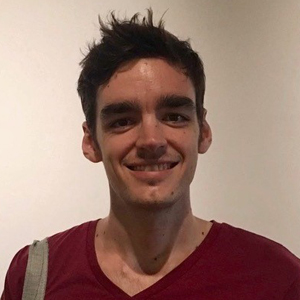City Expansion Creating 'New Ecological Niches' for Infectious Diseases
Emerging infectious diseases are heavily influenced by how and where we live. The COVID-19 outbreak has highlighted the importance of understanding the relationships between urban development and new or re-emerging infectious diseases.
Dr Creighton Connolly, Senior Lecturer in Development Studies and the Global South at the University of Lincoln, has led an interdisciplinary research project which indicates that urban expansion is creating the conditions for infectious diseases to emerge and spread around the world.
The study shows that urban expansion at the periphery of cities, sometimes called extended urbanisation, is fundamentally altering the spatial relationships which shape how millions of people live and interact with each other and with nature.
The research shows that the global trend towards urbanisation has contributed to the rise in the total number of disease outbreaks per decade since the 1980s. In doing so, urban expansion is creating new ecological niches’ for the spread of infectious diseases.
In particular, suburban and ‘peri-urban’ areas are more likely than cities to be the source of new and re-emerging infectious diseases, the study explains. They are particularly vulnerable to zoonoses (diseases that jump the animal-to-human boundary), as they bring populations of humans and livestock into contact with displaced wildlife in a manner that does not happen in cities. They are often densely populated, poorly planned, and lacking health infrastructure and good governance.
“Previous research has perhaps been a bit too biased toward global cities. COVID-19 and previous outbreaks like Ebola are really a story of peri-urban and rural-to-urban connections, in places that are often not on the global map,” Dr Connolly explains.
Dr Creighton ConnollyImproved transport infrastructure has cut journey times between countryside, suburbs, and cities from days to hours. However, the infrastructure vital for good public health, like health clinics and clean water, often lags behind.
Dr Connolly adds: “Governance – particularly the mechanics for responding rapidly to disease outbreaks – are also weaker in these fringe communities in the so-called ‘urban shadow’ compared to established towns and cities, as jurisdictional responsibilities are often blurred.”
Rapid urbanisation, particularly in developing regions of Asia and Africa, is bringing about greater rural-urban migration, with populations drawn to new types of suburban settlements on the periphery of cities. The recent SARS and Ebola outbreaks are high profile examples of epidemics which originated in these new types of suburban hinterland before spreading into larger, established cities.
The researchers say this structural weak spot to infectious disease outbreaks has largely been overlooked in academic studies of the epidemiology of global urbanisation, which instead have tended to focus on chronic diseases in suburban and peri-urban regions. The researchers concluded that more research is needed along interdisciplinary lines to understand the social, economic, and epidemiological factors influencing disease spread.
Meet the Expert
Dr Creighton Connolly
School of Geography

Dr Creighton Connolly is a Senior Lecturer in Development Studies and the Global South.
He is an urban geographer and political ecologist whose research focuses primarily on Malaysia and Singapore. He uses collaborative, action-oriented approach for his research, which involves working closely with civil society actors to identify challenges in the areas of transportation planning, environmental sustainability, public health, and heritage conservation, and how they may be overcome.
